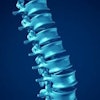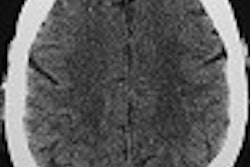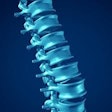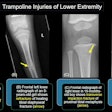An examination of operator-dependent discrepancies in radiation dose delivered during barium enema examinations has inspired a successful protocol change and overall dose reduction at one British radiology department.
By replacing obsolete overcouch radiographs with digital spot films for barium enema exams, British researchers found they could cut radiation exposure without compromising diagnostic accuracy. The researchers from Stoke Mandeville Hospital in Aylesbury, U.K. reported their findings in the British Journal of Radiology (August 2002, Vol.75:896, pp. 652-656.)
Previously, patients whose exams were conducted by a radiographer rather than a radiologist were penalized by a protocol requiring radiographers to take three routine radiographs for reporting. The protocol change reduced the dose delivered by radiographers by nearly 57%.
The diagnostic accuracy of the new protocol was assessed by reviewing all of the endoscopically or surgically confirmed cancers among patients examined during the year 2000. In each case, the researchers noted the accuracy of the preceding radiology report and whether the barium enema exam had been performed by a radiologist or radiographer. The radiologists had observed all four of the confirmed colorectal cancers.
The dose-area product (DAP) for barium enemas performed by four specially trained radiographers and seven radiologists was measured with DAP meters. A total of 912 exams were performed at the facility in 2000.
The mean DAP for the radiographers was 9.8 Gycm2, compared to 10.7 Gycm2 for the radiologists. The radiologists had received the potentially more difficult cases through a selection system that directed all in-patients, patients over 75 years old, and those with a disability to them.
Interestingly, although the disparity in DAP between the groups disappeared after the routine radiographs were eliminated, both groups had significantly lower DAP readings from 1996 levels. At that point, the mean DAP delivered by radiographers was 22.6 Gycm2 and the mean for radiologists was 18.6 Gycm2.
The 40% reduction in radiologist-delivered dose was "largely attributable to the fact that radiologists had likewise abandoned the practice of taking plain radiographs," wrote the authors. "Other factors contributing to overall reduction in group DAP values in both staff groups were alterations in technique regarding positioning of the explorator before screening at the start of the examination, removal of the grid whilst screening in the barium (reducing DAP by an estimated 2-3 Gycm2), and greater awareness and use of collimation."
The authors noted that the overall number of patients receiving barium enema exams at the hospital had decreased between 1996 and 2000 following the introduction of a rectal bleeding clinic and the use of CT with oral contrast or CT pneumocolon, according to need.
The study also discovered discrepancies among dose delivered by radiologists, which suggests that each radiologist’s technique could have an impact on the radiation dose the patient receives.
"There were highly significant differences in DAP between some individuals for radiologists (p<0.01), but not for radiographers," the authors concluded. "The lowest DAP readings, which were achieved by Radiologist 3, were principally owing to use of a technique that pays close attention to collimation. These factors indicate that there may be scope for alteration in technique for some individual operators."
By Tracie L. ThompsonAuntMinnie.com contributing writer
September 13, 2002
Related Reading
New generation of digital fluoro systems can reduce radiation exposure, March 3, 2001
Copyright © 2002 AuntMinnie.com



















